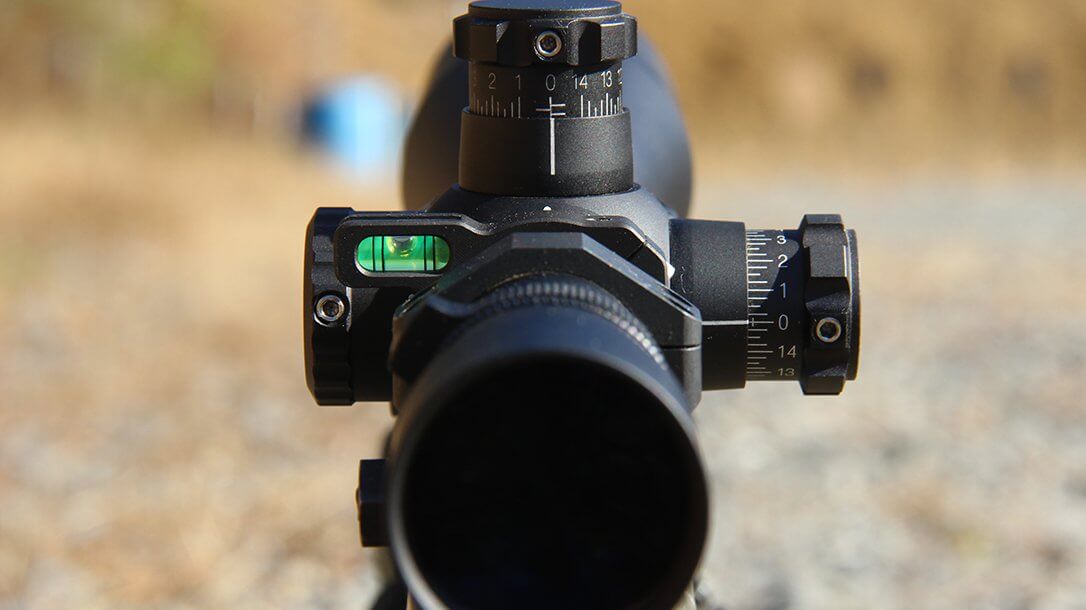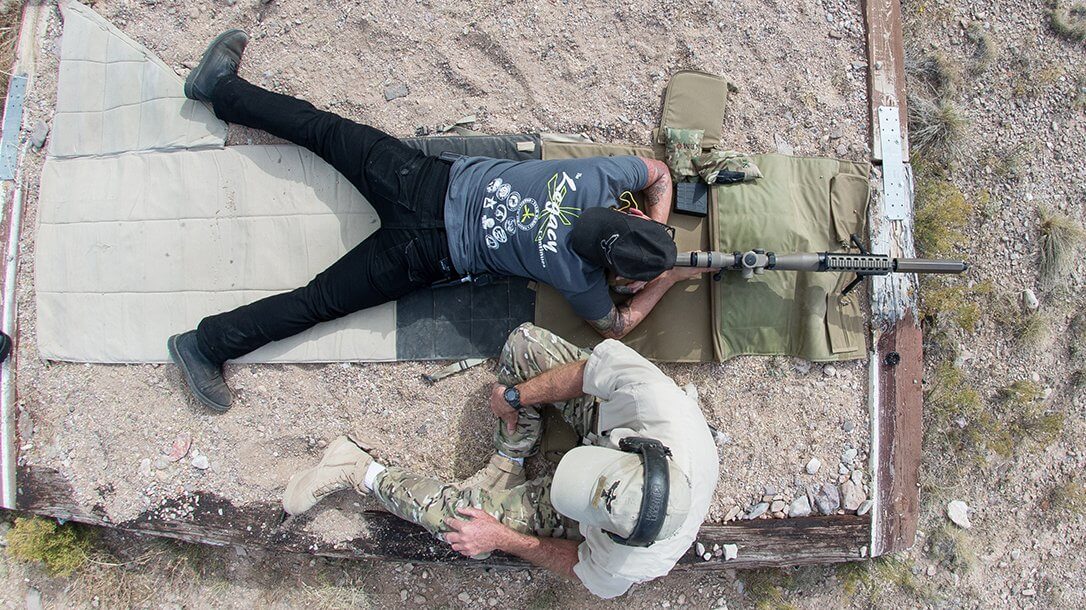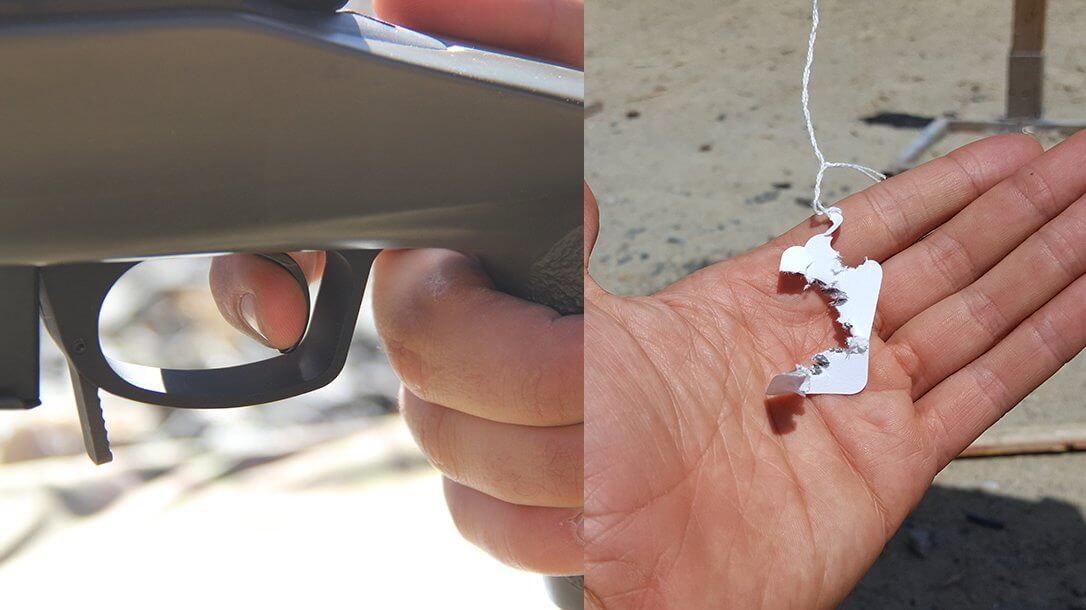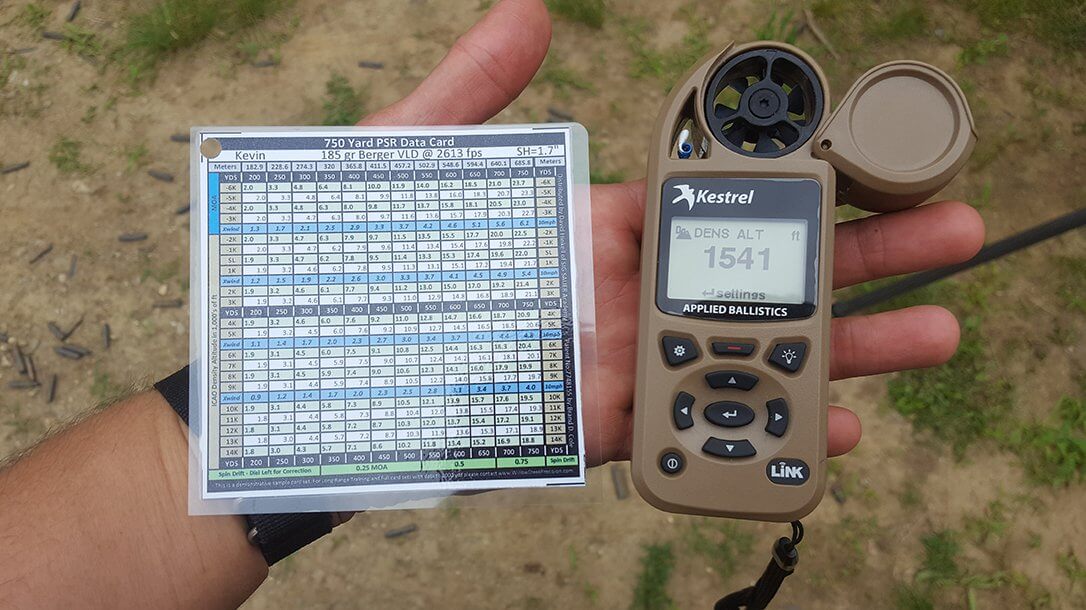Long-Range Shooting 101
January 19th, 2020
7 minute read
Long-range marksmanship is more than dropping down behind a scoped rifle, getting a sight picture, squeezing the trigger, and hitting targets at will. The more you read, the more you’ll learn about breathing control, consistent trigger pulls, body position, reading the wind and discerning its value, density altitude, spin drift, and all the other factors that come into play. Some shooters will become discouraged by all the variables they must consider and never take up long-range shooting. But these long-range shooting tips can make the job a lot easier.
It’s wise to understand the challenges you have in front of you before you invest your time, money, and energy into a shooting discipline you may not like. Seek out others who are competent in long-range marksmanship and audit their range session. Take a class where you can borrow a rifle for the course of instruction. Long-range marksmanship is not a casual hobby; you should try before you buy.
Check out Ballistic Magazine for more expert content on shooting tips.
The Right Stuff
Steel sharpens steel, and the rifle you choose to sharpen your skills with is at the heart of long-range shooting. Browse the aisles of gun stores and you’ll have more than a few rifles to select from. The secret lies in finding the rifle that fits you and your long-distance goals. For most, this will mean a bolt-action centerfire rifle in a common long-range caliber such as the .308 Winchester or 6.5 Creedmoor.
The rifle you choose will need to fit you. That is, your rifle should have the appropriate-height cheek rest and length of pull to match your frame and the optic you eventually install. Speaking of stocks, focus on selecting a rifle with a synthetic stock less likely to be affected by changes in temperature and humidity as wooden counterparts. Don’t fret if your rifle and optic aren’t a perfect pair, as you can build up a cheek rest with closed-cell foam and duct tape or purchase a quality aftermarket model like those from Bradley Cheek Rest made from Kydex.
When you’ve decided on your rifle, the next major decision is the optic you will become very familiar with for hours on end at the range. There are equally as many choices to decide from. Front-focal-plane (FFP) or second-focal-plane (SFP) reticle? Mil adjustments or MOA? One inch or 30mm tube? The choices are overwhelming, but remember your goals and think about what choices will make the most sense for you, not someone else. Ask yourself logical questions. How much magnification do I need? What features help make adjustments to windage and elevation easier? What reticle am I willing to learn and become competent with?
Make sure you don’t skimp on the way your expensive optic is mounted to your expensive rifle and invest in a solid mount and precision-ground rings like those from Badger Ordnance. If you plan on going out to 1,000 yards, a base with 20 minutes of angle (MOA) built in will be appreciated. When you make fewer adjustments at greater distances, you’ll thank yourself for thinking ahead and purchasing it. Weak links in your precision rifle setup are created when corners are cut on quality.
Equally important is finding the right ammunition. Barrel twist rates and bullet weights will yield mixed results when combined. Purchase quality match ammunition from different manufacturers and discover what combination works best. Consider your precision rifle a high-end sports car and feed it premium fuel. Just shy of reloading your own ammo, you’ll find a quality round that performs the best in your rifle; stick with it religiously, and even look for matching lot numbers on the box of ammo for consistency.
The little things follow the big purchases. Look into purchasing a bubble level for your optic as well as a good bipod with an adjustable swivel in case the ground is uneven. Front and rear shooting bags may also be used, serving to stabilize the rifle. A good padded sling will help you carry your 15-pound rifle, and a solid case like a Pelican 1750 will protect it in transport. Cleaning and maintenance schedules will vary, but a good one-piece cleaning rod and bore guide are great accessories to have.

Self-Discovery
Long-range marksmanship requires learning what works best for you. Starting from the prone position, or seated if you have physical limitations, learn and document in a log book what happens to your accuracy when you use different parts of your trigger finger to break each shot. Use the tip of the first pad, the center and the first joint and determine which provides the best accuracy for you. Think of squeezing the trigger as compressing your fingerprint. Try placing your thumb on one section of the stock and then another. When you find out which results in the best accuracy, stick with it.
Find out where you should break your shot in your breathing cycle. Are you a full-, half- or empty-lung shooter? Again, fire a few strings with each and document your results. Note how your vision is affected and how clear the reticle is just before you break your shot.
Learn what scope magnification you are most comfortable with. Just because your optic maxes out at 25X magnification doesn’t mean you should use it for every range. You may find working with the lowest magnification will yield the best results. There is truth to the maxim “aim small, miss small.”

Good Habits
In order to excel in this arena, you need to develop good habits. If you are a blank slate to this type of training, you won’t have to erase the bad habits and training scars you may or may not be aware of. Repeatable long-range accuracy is all about consistency. This is why a log book where you can track all of your data is essential.
What you need to develop for better accuracy is a consistent routine to follow each time you drop behind the rifle.
A sample routine may include lining up your natural point of aim, loading the bipod with forward pressure, placing your cheek straight down on the stock to prevent pushing it right or left, acquiring a sight picture, closing the bolt, checking your bubble level, adjusting your reticle, disengaging the safety, breathing, squeezing the trigger and reacquiring the sight picture after the round is fired.
If that sounds like a lot to do in succession, it is, but it becomes second nature with enough good repetitions.
Perform that routine enough times correctly and it will become second nature and habit. Soon enough, you’ll instinctively be able to index where your body belongs on the rifle by where your cheek rests on the stock and where the buttstock slips into the pocket between your shoulder and your pectoral muscle.
Forces of Nature
Of course, you cannot control the environment. While gravity is consistent, wind is not. Learning to read the wind and estimate its speed and value is a skill in itself. A mild wind at 100 yards might not be as noticeable as it is at 300, 600, and 1,000 yards. Learn what a 5 mph wind feels like on your face and what it does to grass and vegetation. Notice what wind looks like at ground level, standing height, and at the tree line, as your shot may fly through all those different levels.
Density altitude (the combination of barometric pressure, temperature, and humidity) is another concern, as it will dictate how easily a bullet will travel through the air. The best tool to calculate this is a Kestrel Applied Ballistics meter paired with data you’ve collected on your rifle through chronographing and using ballistics tables. Other environmental factors will affect your performance, including the amount of sunlight, altitude, and precipitation. Track how your rifle performs in all conditions and set up your shot correctly the next time you face similar conditions.

Good Data
At the beginning of each range session, you should always keep track of your cold-bore shot. This will give you an indication where your first round will impact before the barrel becomes fouled. Fire a five-shot group and track where the center is. Don’t be afraid to move your windage or elevation to compensate for a shift from your last session. Just be careful not to get in the habit of moving your windage and elevation after each shot, as flyers could be the result of user error and not the rifle.
If you can consistently shoot a one-hole, five-shot group, try putting 10 rounds into a single hole. See what happens when you increase the round count and your time behind the gun. Speaking of optics, every once in a while, run a box drill to make sure your optic’s adjustments are true. A box drill will result in shot groups in a square pattern when the shooter aims at the bullseye after adjustments are made in a clockwise or counterclockwise direction. If only elevation or if only windage is the concern, a line drill should result in holes punched in your target in a straight line.

The Next Steps with Long-Range Shooting
No long-range marksman I know is ever fully satisfied with their performance, rifle, or training. There is a constant pursuit of smaller groups and better equipment. At some point, you will likely upgrade your optic to one with greater magnification, improve your rifle with a detachable magazine or a better stock, and purchase a suppressor. Eventually, you’ll probably start loading your own ammunition, too.
When punching holes in paper with no time limit becomes less exciting, you can modify your training to challenge yourself and increase the pressure on your skills. Different shooting positions, increased distance, decreased time limits, smaller targets, and moving targets are all ways to change up your range experience. One particular challenge I picked up at the Sig Sauer Academy is shooting a swinging price tag at 100 yards.
I’ve heard about practicing until you get it right. I’ve also heard about practicing until you never get it wrong. With long-distance marksmanship, the ultimate goal would be a single hole in the absolute dead-center of the target on command. Since so many factors contribute to thrown shots and enlarged groups, this difficult standard is one many will chase over thousands of rounds. Accuracy is a drug, and long-range accuracy is one of the most addictive. It’s never too late to start on your quest for this precision rifle skillset.
This article is from the 2018 issue of Ballistic Precision.
Editor’s Note: Please be sure to check out the new The Armory Life forum, where you can comment about our daily articles, as well as just talk guns and gear. Click the “Go To Forum Thread” link below to jump in!
Join the Discussion
Continue Reading
Did you enjoy this article?

 37
37






